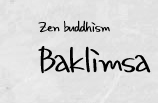We do not really know what sound is, what hearing is or what it is we take for "self" while hearing. We do not know the phenomena which appear at the present moment.
우리는 소리가 무엇인지 듣는다는 것이 무엇인지 모르고, 듣고 있는 동안에 그것을 자아로 여긴다. 우리는 진정 현재 순간에 나타나는 현상이 무엇인지 모른다.
When we are absorbed in the outer appearance and the details of things, we will not be able to be aware of the realities of the present moment. So long as we are carried away by like or dislike of what we see and hear, it is impossible to see things as they are. It is as if we are asleep; we are not yet awake to the truth. The Buddha was perfectly mindful and he had complete knowledge of all the different kinds of mental and physical phenomena.
우리가 사물의 겉모양과 사소한 것에 몰두해 있으면 현재 순간에 실재하는 것을 알아차릴 수 없다. 보고 들은 것을 좋아하거나 싫어하여 자제심을 잃으면 사물을 있는 그대로 알아차리는 것이 불가능하다. 이것은 마치 잠든 것과 같다. 진실에 대해서 깨어있지 못하다. 부처님께서는 완벽하게 알아차리셔서 정신과 물질의 다양한 모습을 완전하게 아셨다.
Therefore he could call himself "the Awakened One" he was fully awake to the truth. We, too, should wake up to the truth. In vipassanā paññā will gradually develop and it will know things as they are. In being aware of the reality which appears at the present moment we learn that there are two kinds of reality: physical phenomena or rūpa and mental phenomena or nāma. Rūpa does not know anything whereas nañā experiences something;
it experiences an object.
그러므로 “깨어난 자”라고 불렀던 것이다. 부처님은 진리에 완전히 깨어나신 분이다. 우리도 진리에 깨어나야 한다. 위빠사나에서 지혜가 서서히 계발되면 사물을 있는 그대로 알게 된다. 현재 순간에 나타나는 실재를 알아차리면 그것이 두 종류 즉, 물질적 현상과 정신적 현상으로 되어 있음을 안다. 물질은 아무것도 모르지만 정신은 무언가를 경험한다. 대상을 경험한다.
For example, visible object is rūpa; it does not know anything. Seeing is a type of nāma; it experiences an object: visible object. Hearing and thinking are other types of nāma, different from seeing. There are many different types of nāma and rūpa, and in vipassanā we learn to experience their characteristics.
예를 들어, 형상은 물질이다. 그러므로 그것은 아무것도 알지 못한다. 보는 것은 정신적 현상의 한 유형이다. 그러므로 그것은 대상을 경험한다. 듣고 생각하는 것은 또다른 유형의 정신적 현상이다. 매우 많은 정신적 현상과 물질적 현상이 있다. 위빠사나 수행을 하면 그것들의 특성을 알 수 있다.
In the development of vipassanā the impermanence of nāmas and rūpas will be directly known. One may have reflected before on the impermanence of all things in life. Reflection on the truth is necessary, but it is not the same as the direct knowledge of the impermanence of all realities in and around oneself. In the beginning the arising and falling away of nāma and rūpa cannot be realised. However, if we learn to be aware of different characteristics of nāma and rūpa which appear one at a time, and if we realize that each nāma or rūpa which appears now is different from preceding nāmas and rūpas, we will be less inclined to think that nāma and rūpa last, and we will be less inclined to take them for "self".
위빠사나 수행을 하면 정신과 물질의 무상함을 곧바로 알 수 있다. 어쩌면 예전에 인생의 모든 것이 무상하다고 생각했을 수가 있지만 그것은 그 자신에게서나 주위에서 직접적으로 무상하다고 아는 것과는 다르다. 처음에는 정신과 물질이 일어나고 사라지는 것을 깨닫지 못할 수도 있다. 그러나 우리가 한 순간에 나타나는 정신과 물질의 다른 성질을 알 수 있으면, 그리고 지금 나타나는 각각의 정신과 물질이 이전의 정신과 물질과는 다르다는 것을 알면, 정신과 물질이 지속한다는 생각에 덜 기울어지게 되고 그것들을 자아라고 여기는 생각이 줄어든다.
출처: 수카또야


















